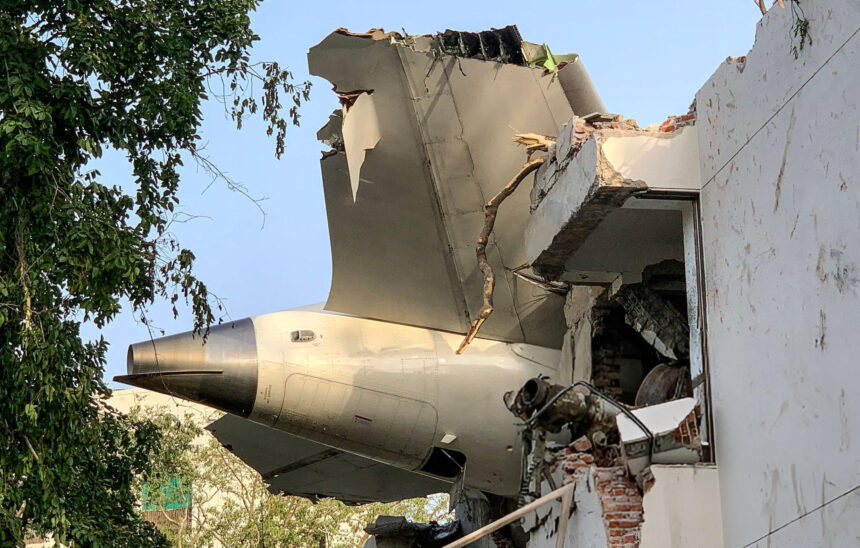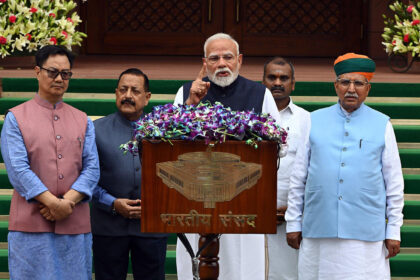Introduction: A Catastrophe that Shook Indian Aviation
On June 12, 2025, an Air India flight headed from Ahmedabad to London faced a horrific disaster just 30 seconds after takeoff, resulting in the deaths of over 260 people, including some on the ground. Although officials are still investigating the causes, a preliminary report from India’s Aircraft Accident Investigation Bureau (AAIB) has created quite a stir.
Instead of providing clarity, the report has raised more questions. The Federation of Indian Pilots (FIP), the leading organization for professional pilots in the country, has criticized how the report was put together and its conclusions. They believe it’s too soon to place blame and that doing so could be harmful.
This article dives into the events surrounding the tragedy, the AAIB’s early findings, the pilots’ concerns, and the broader implications for aviation safety and accountability in India.
Crash Overview: 30 Seconds to Tragedy Of AI171
- Flight No.: AI171
- Aircraft: Boeing 787-8 Dreamliner
- Takeoff Time: 1:38 PM IST, June 12
- Crash Time: ~1:39 PM IST (approx. 27–30 seconds later)
- Site: Impacted the hostel block of BJ Medical College, about 1.8 km from the runway
Casualties:
- Total Onboard: 243
- Survivors: 1
- Onboard Fatalities: 242
- Ground Fatalities: 19 confirmed (including students and staff)
- Total Dead: 261
- Injured: Over 30, many critically
Initial emergency response was swift, but fire and structural collapse of the hostel delayed rescue efforts. The scale of human loss, both in the air and on the ground, has left the country in collective mourning.
AAIB Preliminary Report: The Fuel Switch Controversy
In early July, the AAIB issued an interim report highlighting a specific technical incident: both engines experienced a near-simultaneous power loss shortly after takeoff.
This was traced to manual movement of the fuel control switches from “RUN” to “CUTOFF.” Approximately 10 seconds later, the switches were returned to “RUN,” but by that time, the aircraft had already lost significant altitude and control.
- The cockpit voice recorder documented a brief exchange between the pilots. One asked, “Why did you cut off?” The other responded, “I didn’t.”
- No mechanical or structural defects were identified in either the engines or the fuel delivery systems.
Following this, India’s Directorate General of Civil Aviation (DGCA) mandated immediate inspections of all Boeing 787 and 737 aircraft, specifically focusing on the integrity of fuel switch locking mechanisms. Air India’s engineering team reported no anomalies within their fleet.
Pilots Push Back: FIP Raises Institutional Red Flags
Just a few days after the report hit the public domain, the Federation of Indian Pilots (FIP) issued a notably direct public response, something they don’t do often. Their primary concerns?
1. Lack of Pilot Representation
FIP voiced strong concerns over the lack of experienced line pilots or pilot union representatives on the AAIB investigation team. This omission, they argue, directly contradicts established best practices as outlined in ICAO Annex 13, which serves as the global benchmark for air accident investigations. Their stance is that such representation is not just procedural—it’s fundamental to a thorough and credible inquiry.
“An investigation without aviation personnel is like a medical diagnosis without a doctor. It undermines the very premise of fairness.”
2. Speculative Language and Incomplete Evidence
The FIP criticized the report for relying on paraphrased excerpts from the cockpit voice recorder instead of providing the complete transcript. This selective approach, they noted, risks stripping away critical context and could easily distort the crew’s intended meaning. As a result, there’s a heightened risk of premature assumptions regarding pilot error, especially given that the comprehensive analysis of the data is still ongoing.
“Assigning blame at this stage ,without access to full black box data or human factors evaluation ,is irresponsible,” the FIP said in its statement.
3. Psychological Harm to Crew Families
Both Capt. Sumeet Sabharwal and Capt. Clive Kunder perished in the crash. The FIP has formally objected to any public allegations of negligence prior to a full investigation. Premature leaks and speculation in the media are causing reputational harm, not just to the pilots’ families, but also to their colleagues and the broader aviation community. Such actions undermine due process and are considered deeply problematic within aviation circles.
Human Factors or System Design? The Bigger Question
No obvious mechanical issues turned up, but you’ve gotta wonder, did the cockpit layout or the way the controls are arranged factor in? Sometimes it’s not about a part failing, but more about how the interface is set up. Poor ergonomics can throw off even experienced pilots. Just because nothing broke doesn’t mean the design gets a free pass.
Experts have pointed to:
- Fuel switches are right next to other switches people use all the time. That’s just risky.
- There’s no guard or double-check, so it’s way too easy to flip the wrong one by accident.
- Boeing even put out a note in 2018 saying the fuel cutoff levers should be changed, but in India, nobody had to do anything about it. Most just ignored it.
And honestly, the first report barely even talked about any of this. No surprise people are asking for a proper audit now.
Comparing Global Norms: Where Does India Lag?
India’s AAIB is modeled on global counterparts like the U.S. NTSB or the UK AAIB, but several key differences remain:
| Standard | Global Norms | Indian Practice |
|---|---|---|
| Pilot Rep. | Mandatory (NTSB, UK) | Often absent |
| Full CVR Release | Public or redacted | Rare or paraphrased |
| Interim Review | Multi-stakeholder | Single-agency |
| System Design Review | Included | Sometimes skipped |
| Public Inquiry | Optional but common | Rare |
Transparency, procedural fairness, and human factors analysis are all areas where India’s current process falls short.
What Happens Now: Awaiting the Final Report
The final AAIB report is expected in the coming months and is likely to include:
- Full flight data analysis
- Complete CVR transcript
- Reconstruction of cockpit activity
- Simulator re-enactments
- Crew fatigue and workload review
Right now, FIP is working with pilot groups from other countries. They want a real, independent look into what’s going on. They’re tired of pilots getting blamed for stuff without proof and just want to keep things fair. They don’t like this habit of blaming first and checking facts later.
Truth Must Precede Judgement
The crash of AI171 has really shaken up India’s aviation sector. It hit public confidence hard and left over 260 families devastated. A tragedy this big needs to be understood, not rushed through.
The plane’s data holds some of the answers, but so do things like the way the cockpit is set up, the systems in place, and how people react under pressure. Blaming someone before looking at everything isn’t just unfair, it’s not professional.
If India wants its aviation sector to be world-class, it needs to hold not just the pilots, but also the whole system, investigators, regulators, everyone, to a high standard. It’s not about being quick, it’s about being right.










